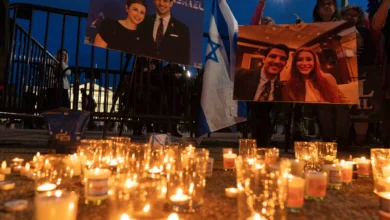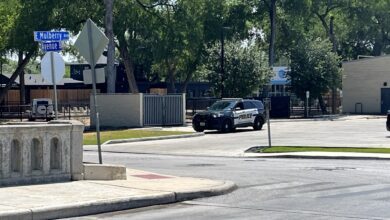
Introduction
The story of Candie Dominguez—also spelled as Candy or Candi Dominguez—has gripped audiences both in Texas and across the world, largely due to her chilling appearance in the Netflix true crime series I Am a Killer. Her case revolves around the 2014 murder of her cousin, Jose Luis Menchaca, a crime that shocked San Antonio with its brutality. What makes her story especially compelling is the mixture of personal tragedy, coercion, and active participation in a violent act. It is a case that has stirred debate on justice, accountability, and the role that upbringing and life circumstances play in shaping human behavior.
This article explores Candie Dominguez’s background, the crime, the trial, her sentence, her portrayal in media, and the broader implications her case has for society’s understanding of crime and punishment.
Early Life and Background
Candie Dominguez was born and raised in San Antonio, Texas. Her childhood was marked by instability and trauma. She has spoken openly about being abandoned by her parents at a young age. By her own account, she ran away from home at just eight years old. Without a stable support system, she navigated a difficult adolescence that was shaped by survival instincts rather than traditional guidance.
By the time she was fifteen, Dominguez was pregnant, entering adulthood far earlier than most. She later married a man more than a decade older than her—a relationship she has described as abusive and controlling. That marriage lasted over two decades, producing children but also exposing her to cycles of domestic violence and economic dependence. These experiences, as she has recounted, set the tone for her adult life: isolation, coercion, and a constant struggle to find stability.
Events Leading to the Crime
The events that led to the murder of Jose Luis Menchaca began with a conflict between Menchaca and Daniel Moreno Lopez, Candie’s boyfriend at the time. Lopez was affiliated with the Texas Mexican Mafia and was involved in the drug trade. Reports indicate that Menchaca and Lopez had previously met during a drug-related exchange. During one such encounter, Menchaca allegedly stabbed Lopez.
According to investigators, Lopez wanted revenge. He instructed Dominguez to lure Menchaca to her home under the pretense of a drug deal. Dominguez later stated that Lopez threatened her and her children if she refused to cooperate. Whether out of fear, loyalty, or a mixture of both, Dominguez agreed to his plan.
The Murder of Jose Luis Menchaca
On September 30, 2014, Menchaca arrived at Dominguez’s home on San Antonio’s North Side. Instead of completing a drug exchange, he was ambushed. Lopez and his cousin, Gabriel Moreno, attacked Menchaca with aluminum baseball bats. Menchaca was severely beaten before being strangled.
What followed shocked even seasoned investigators. Menchaca’s body was dismembered, and parts of it were burned on a barbecue pit in the backyard. Dominguez admitted to participating in the dismemberment, stating she acted under Lopez’s orders. She claimed she feared for her own life and the safety of her children if she disobeyed.
Discovery and Investigation
Neighbors reported suspicious activity at Dominguez’s residence, including smoke and a strong odor coming from the yard. Police, acting on tips, arrived at the scene to make a grim discovery. They found partial human remains, a bloodstained interior, and signs of a violent struggle.
The investigation quickly focused on Dominguez, Lopez, and Moreno. Physical evidence, combined with witness statements, tied them directly to the crime. The brutality of the act, the use of a family connection to lure the victim, and the attempt to destroy evidence made the case a top priority for local law enforcement.
Legal Proceedings
The trial process was divided among the defendants:
Daniel Moreno Lopez was tried first. In mid-2018, a jury found him guilty of murder. He was sentenced to life in prison without parole later that year.
Gabriel Moreno faced trial in 2018 as well, but his first trial ended in a mistrial. In a retrial in December 2018, he was acquitted.
Candie Dominguez was the final defendant to face sentencing. In February 2019, she entered a guilty plea to murder as part of a plea bargain in exchange for her testimony against Lopez. She received a 30-year prison sentence.
Her children had pleaded for leniency, emphasizing her cooperation and claiming she had been manipulated and threatened into participating. The court acknowledged her cooperation but still imposed a significant sentence, given her active role in the killing and post-mortem actions.
Candie Dominguez’s Testimony
During court proceedings, Dominguez’s testimony was notably calm and detailed. She described the dismemberment process, the use of the barbecue pit, and the timeline of events. This composure became a focal point for media coverage, with some observers seeing it as emotional detachment and others interpreting it as a coping mechanism.
She repeatedly emphasized that she had acted under duress, claiming Lopez’s threats were explicit and credible. Nevertheless, the court and prosecution argued that her cooperation, while useful in securing Lopez’s conviction, did not erase her moral and legal responsibility.
Portrayal in I Am a Killer
Candie Dominguez’s case was featured in I Am a Killer Season 6, in a two-part episode titled “A Mother’s Choice”. The episodes aired on January 8, 2025, and included interviews with Dominguez from prison, footage from her trial, and commentary from prosecutors, investigators, and family members.
The show’s producers presented her as both a perpetrator and a product of a troubled life. They allowed her to share her story in her own words, detailing her childhood, abusive relationships, and the events of September 30, 2014. The series also gave voice to the victim’s family, highlighting their grief and their anger toward her actions.
The two-part feature sparked widespread discussion online. Viewers debated whether her life circumstances mitigated her guilt or whether her calculated role in the murder outweighed her claims of coercion.
Public Reaction
The public response to Dominguez’s case and her I Am a Killer appearance was deeply divided:
Sympathetic views: Some viewers believed her abusive background and Lopez’s threats explained her participation. They saw her as another victim in a chain of violence.
Critical views: Others argued that she had agency and could have chosen a different path, particularly when it came to betraying her cousin.
Legal perspectives: Criminal justice experts noted that plea deals often reflect strategic decisions to secure convictions for the most culpable offenders. In this case, the 30-year sentence balanced her cooperation with the severity of her involvement.
Broader Issues Raised by the Case
The Dominguez case touches on several broader topics in criminal justice and social policy:
The Role of Coercion in Criminal Acts
Her defense leaned heavily on the argument that she was acting under threats. This raises complex legal and moral questions about where coercion ends and personal responsibility begins.
Impact of Childhood Trauma
Dominguez’s life story illustrates how early abuse and neglect can shape later decision-making, risk tolerance, and susceptibility to control by others.
Plea Bargains in Violent Crimes
Her plea deal was essential in convicting Lopez. The ethics of reducing sentences for severe crimes in exchange for cooperation remains controversial.
Media Influence on Public Perception
The Netflix series gave her a platform to tell her story, which inevitably shaped public opinion—sometimes in her favor, sometimes against her.
Life in Prison
Candie Dominguez is serving her sentence in the Texas Department of Criminal Justice system. With good behavior and parole eligibility rules, she could be considered for release before serving the full 30 years, though such decisions depend on multiple factors including conduct, rehabilitation progress, and parole board assessments.
While incarcerated, she has reportedly participated in educational and vocational programs, though details about her prison life remain limited to brief mentions in media interviews.
The Legacy of the Case
The murder of Jose Luis Menchaca left a permanent mark on his family and community. For many, the most haunting element is the betrayal—being lured to death by someone you trusted. For others, the case stands as an example of how cycles of abuse can perpetuate more violence.
Candie Dominguez’s story, as told through both legal records and documentary interviews, serves as a reminder that behind every criminal case lies a web of personal histories, relationships, and choices. The difficulty lies in deciding how much those histories should influence sentencing and judgment.
Conclusion
Candie Dominguez’s case is one of the most disturbing in recent San Antonio history—not just for the brutality of the act, but for the layers of personal history, coercion, and cooperation that complicate it. She was sentenced to 30 years in prison for her role in the murder of her cousin, a sentence shaped by her plea deal and testimony against her boyfriend, Daniel Moreno Lopez.
Her appearance in I Am a Killer has immortalized her version of events, sparking ongoing debate about justice, personal responsibility, and the impact of upbringing on crime. While some see her as a victim of circumstance, others see her as a willing participant in an unforgivable act.
What is clear is that her story continues to resonate because it forces uncomfortable questions—about family, survival, betrayal, and the thin line between victim and perpetrator. blogvista.co.uk/



